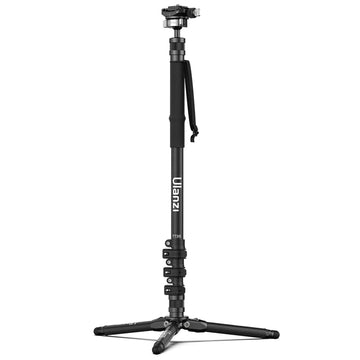In the dynamic world of photography, capturing the perfect shot often requires a blend of stability and mobility. This is where monopods come into play, offering a versatile solution for photographers who are always on the move. This article, "The Ultimate Guide to Portable Monopods for On-the-Go Photographers," aims to provide an in-depth understanding of these essential tools, ensuring you make an informed choice for your photography needs.

Understanding the Basics of Monopods
Monopods, also known as unipods, are single-legged support devices that provide stability for cameras. Unlike tripods, which have three legs, monopods are designed for quick setup and easy maneuverability. This makes them ideal for situations where speed and flexibility are crucial, such as sports events, wildlife photography, and travel.
Why Choose a Portable Monopod?
For on-the-go photographers, portability is key. Portable monopods are lightweight, compact, and easy to carry, making them perfect for travel and outdoor shoots. They can be easily collapsed and stored in a backpack or camera bag, ensuring that you are always ready to capture the moment. Additionally, their quick setup time allows photographers to react swiftly to changing scenes and subjects.
Features to Look for in a Portable Monopod
When selecting a portable monopod, there are several features to consider:
- Weight: A lightweight monopod is easier to carry and handle, especially during long shoots.
- Material: Monopods are typically made from aluminum or carbon fiber. Aluminum is durable and affordable, while carbon fiber is lighter and absorbs vibrations better.
- Height: Ensure the monopod extends to a comfortable height for your shooting style.
- Load Capacity: Check that the monopod can support the weight of your camera and lens.
- Locking Mechanism: Look for a reliable locking mechanism that ensures stability and ease of use.
Innovative Uses of Monopods
Monopods are not just for stability; they can be used creatively to enhance your photography:
- Low-Angle Shots: Use the monopod to stabilize your camera for low-angle shots without having to lie on the ground.
- Overhead Shots: Extend the monopod to capture overhead shots in crowded or hard-to-reach places.
- Video Stabilization: Monopods can help stabilize video footage, providing smoother pans and tilts.
Conclusion
In conclusion, "The Ultimate Guide to Portable Monopods for On-the-Go Photographers" highlights the importance of choosing the right monopod for your needs. By understanding the basics, recognizing the benefits of portability, and knowing what features to look for, you can make an informed decision that enhances your photography experience. Whether you are capturing the fast-paced action of a sports event or the serene beauty of a landscape, a portable monopod can be an invaluable tool in your photographic arsenal.
Remember, the key to great photography is not just the equipment you use, but how you use it. With the right monopod, you can achieve the perfect balance of stability and mobility, ensuring that you never miss a shot. Happy shooting!













